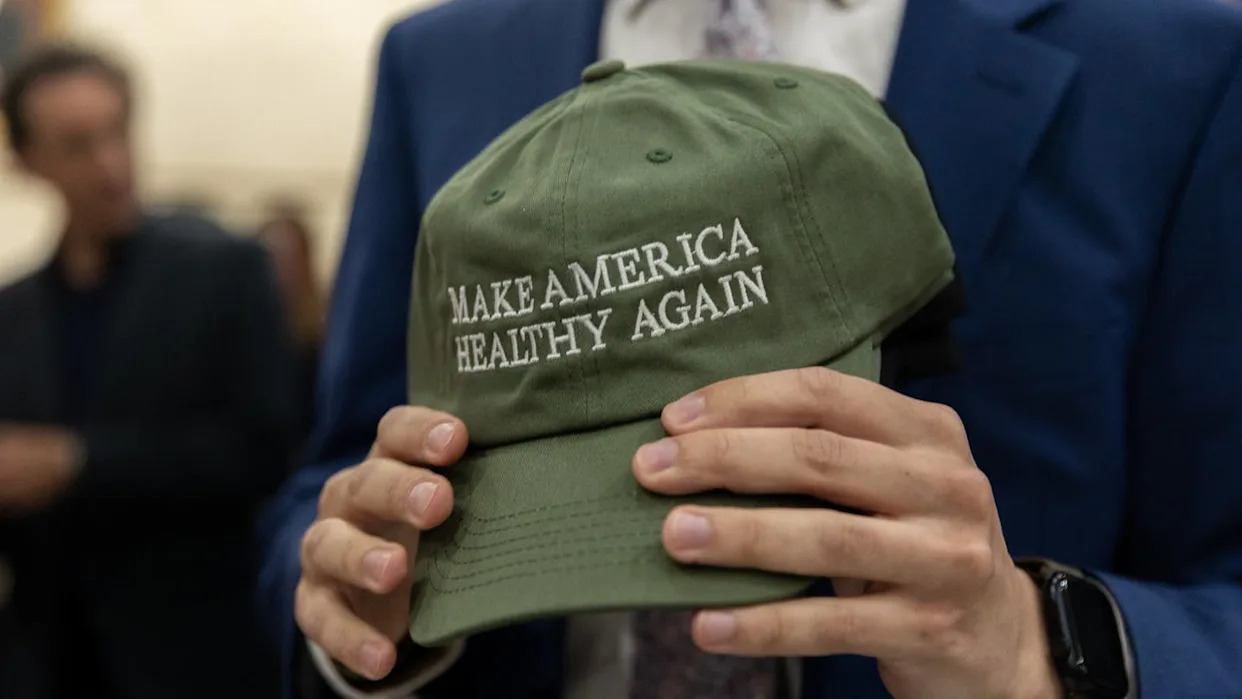
The Make America Healthy Again movement has generated a lot of discussion about public health. But the language MAHA proponents use to describe health and disease has also raised concerns among the disability and chronic illness communities.
I’m a researcher studying the rhetoric of health and medicine – and, specifically, the rhetoric of risk. This means I analyze the language used by public officials, institutions, health care providers and other groups in discussing health risks to decode the underlying beliefs and assumptions that can affect both policy and public sentiment about health issues.
As a scholar of rhetoric and the mother of an autistic child, in the language of MAHA I hear a disregard for the humanity of people with disabilities and a shift from supporting them to blaming them for their needs.
Such language goes all the way up to the MAHA movement’s highest-level leader, Health and Human Services Secretary Robert F. Kennedy Jr. It is clearly evident in the report on children’s health published in May 2025 by the MAHA Commission, which was established by President Donald Trump and is led by Kennedy, as well as in the MAHA Commission’s follow-up draft recommendations, leaked on Aug. 15, 2025.
Like many people, I worry that the MAHA Commission’s rhetoric may signal a coming shift in how the federal government views the needs of people with disabilities – and its responsibilities for meeting them.
Personal choice in health
One key concept for understanding the MAHA movement’s rhetoric, introduced by a prominent sociologist named Ulrich Beck, is what sociologists now call individualization of risk. Beck argued that modern societies and governments frame almost all health risks as being about personal choice and responsibility. That approach obscures how policies made by large institutions – such as governments, for example – constrain the choices that people are able to make.
In other words, governments and other institutions tend to focus on the choices that individuals make to intentionally deflect from their own responsibility for the other risk factors. The consequence, in many cases, is that the institution is off the hook for any responsibility for negative outcomes.
Beck, writing in 1986, pointed to nuclear plants in the Soviet Union as an example. People who lived near them reported health issues that they suspected were caused by radiation. But the government denied the existence of any evidence linking their woes to radiation exposure, implying that lifestyle choices were to blame. Some scholars have identified a similar dynamic in the U.S. today, where the government emphasizes personal responsibility while downplaying the effects of public policy on health outcomes.
A shift in responsibility
Such a shift in responsibility is evident in how MAHA proponents, including Kennedy, discuss chronic illness and disabilities – in particular, autism.
In its May 2025 report on children’s health, the MAHA Commission describes the administration’s views on chronic diseases in children. The report notes that the increased prevalence in “obesity, diabetes, neurodevelopmental disorders, cancer, mental health, autoimmune disorders and allergies” are “preventable trends.” It also frames the “major drivers” of these trends as “the food children are eating, the chemicals they are exposed to, the medications they are taking, and various changes to their lifestyle and behavior, particularly those related to physical activity, sleep and the use of technology.”

Notably, it makes no mention of systemic problems, such as limited access to nutritious food, poor air quality and lack of access to health care, despite strong evidence for the enormous contributions these factors make to children’s health. And regarding neurodevelopmental disorders such as autism, it makes no mention of genetics, even though decades of research has found that genetics accounts for most of the risk of developing autism.
There’s nothing inherently wrong with studying the environmental factors that might contribute to autism or other neurodevelopmental disorders. In fact, many researchers believe that autism is caused by complex interactions between genes and environmental factors. But here’s where Beck’s concept of individualization becomes revealing: While the government is clearly not responsible for the genetic causes of chronic diseases, this narrow focus on lifestyle and environmental factors implies that autism can be prevented if these factors are altered or eliminated.
While this may sound like great news, there are a couple of problems. First, it’s simply not true. Second, the Trump administration and Kennedy have canceled tens of millions of dollars in research funding for autism – including on environmental causes – replacing it with an initiative with an unclear review process. This is an unusual move if the goal is to identify and mitigate environmental risk factors And finally, the government could use this claim to justify removing federally funded support systems that are essential for the well-being of autistic people and their families – and instead focus all its efforts on eliminating processed foods, toxins and vaccines.
People with autism and their families are already carrying a tremendous financial burden, even with the current sources of available support. Cuts to Medicaid and other funding could transfer the responsibility for therapies and other needs to individual families, leaving many of them to struggle with paying their medical bills. But it could also threaten the existence of an entire network of health care providers that people with disabilities rely on.
Even more worrisome is the implication that autism is a kind of damage caused by the environment rather than one of many normal variations in human neurological diversity – framing people with autism as a problem that society must solve.
How language encodes value judgments
Such logic sets off alarm bells for anyone familiar with the history of eugenics, a movement that began with the idea of improving America by making its people healthier and quickly evolved to make judgments about who is and is not fit to participate in society.
Kennedy has espoused this view of autism throughout his career, even recently claiming that people with autism “will never pay taxes. They’ll never hold a job. They’ll never play baseball. They’ll never write a poem.”
Even if organic foods and a toxin-free household were the answer to reducing the prevalence of autism, the leaked MAHA Commission strategy report steers clear of recommending government regulation in industries such as food and agriculture, which would be needed to make these options affordable and widely available.
Instead, MAHA’s supposed interventions would remain lifestyle choices – and expensive ones, at that – left for individual families to make for themselves.
Just asking questions
Kennedy and other MAHA proponents also employ another powerful rhetorical tactic: raising questions about topics that have already reached a scientific consensus. This tactic frames such questions as pursuits of truth, but their purpose is actually to create doubt. This tactic, too, is evident in the MAHA Commission’s reports.
This practice of “just asking questions” while ignoring already established answers is widely referred to as “sealioning.” The tactic, named for a notorious sea lion in an online comic called Wondermark, is considered a form of harassment. Like much of the rhetoric of the anti-vaccine movement, it serves to undermine public trust in science and medicine. This is partly due to a widespread misunderstanding of scientific research – for example, understanding that scientific disagreement does not necessarily indicate that science as a process is flawed.
MAHA rhetoric thus continues a troubling trend in the anti-vaccine movement of calling all of science and Western medicine into question in order to further a specific agenda, regardless of the risks to public health.
The MAHA Commission’s goals are almost universally appealing – healthier food, healthier kids and a healthier environment for all Americans. But analyzing what is implied, minimized or left out entirely can illuminate a much more complex political and social agenda.
This article is republished from The Conversation, a nonprofit, independent news organization bringing you facts and trustworthy analysis to help you make sense of our complex world. It was written by: Megan Donelson, University of Dayton
Read more:
Megan Donelson does not work for, consult, own shares in or receive funding from any company or organization that would benefit from this article, and has disclosed no relevant affiliations beyond their academic appointment.





Comments